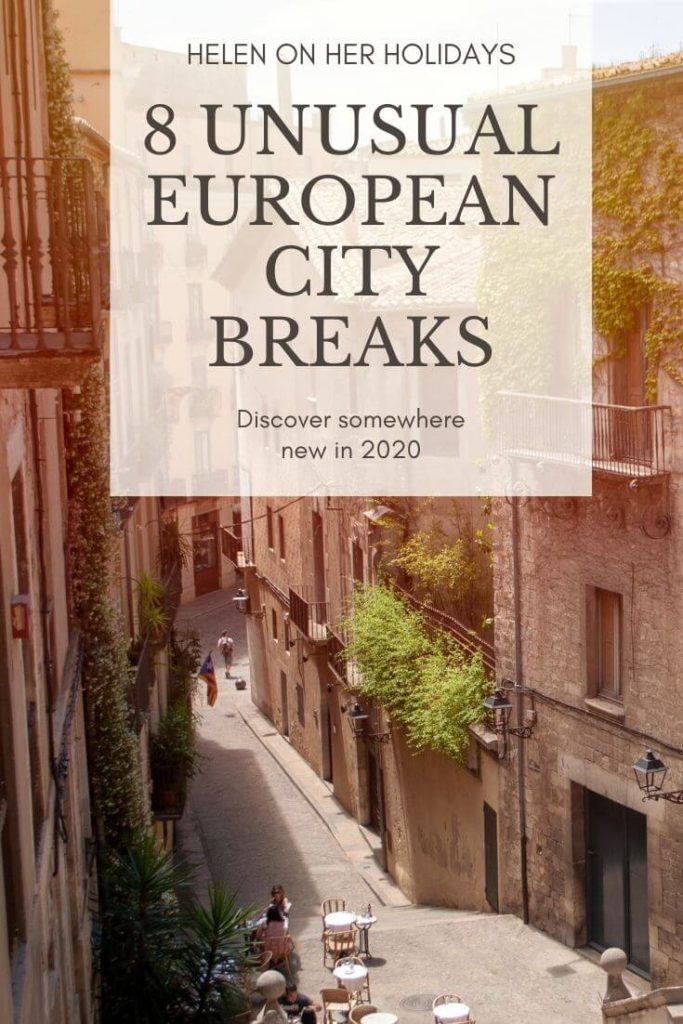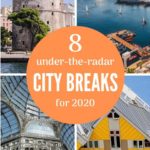This post is written in collaboration with Jet2.com and Jet2CityBreaks, but all opinions are my own.
Once you’ve visited the big Europe city break destinations – the likes of Rome, Paris, Amsterdam, Berlin and Prague – where do you go next? It’s something I’ve been thinking about, now my project to visit all the EU capitals is finished, and I’ve spent a *lot* of time on Instagram, travel blogs and flight booking sites wondering where I should go in 2020. A couple of weeks ago I went to a Jet2CityBreaks event, and the lovely team there gave me a few ideas for some Europe city breaks to take in 2020.
Lucca, Italy
For romantic walks on the city walls, beautiful gardens and historic streets
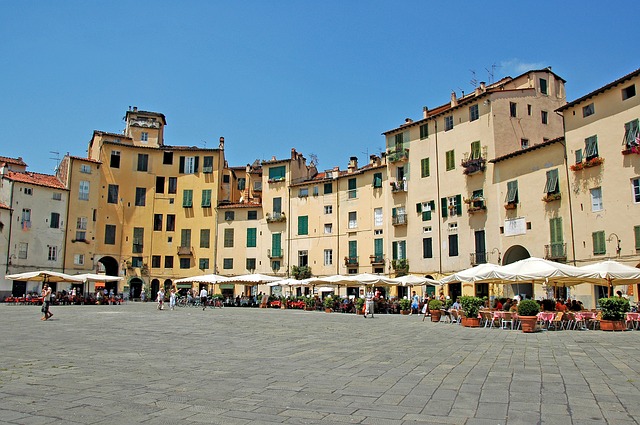
Have you considered Lucca as a city break destination? Nope, me neither. This small Tuscan city is overshadowed by its more famous neighbour Pisa, as well as Florence, which is only an hour and a half away by train. But even if you’ve been to this part of Italy before, Lucca is well worth a look for a weekend break.
Lucca is best known in Italy for its amazing Medieval walls, which still circle the old town. The wide ramparts have been made into lovely walkways, where you can look out over the old city. Walking the full 2.5mile route around the walls and seeing the 11 bastions looks like a lovely way to spend an hour or two in Lucca.
In the old city centre there are some beautiful and fascinating buildings: the Renaissance cathedral with its half-finished bell tower; the Basilica di San Michele in Foro which has beautiful pictures of wild animals on the front facade and the 700-year old Torre delle Ore, which you can climb for stunning views over the city. Top of my list for a trip to Lucca would be visiting the Piazza dell Anfiteatro. At first sight this oval-shaped piazza looks strange, but the clue to the reason behind its shape is in its name. The Piazza dell Anfiteatro is built on the site of an old Roman amphitheatre, and the buildings that you see today take the shape of the amphitheatre’s oval walls.
Lucca also has two interesting gardens. The first is the Orto Botanico Comunale di Lucca, a small botanical garden with a pretty lily pond below the city walls. The second is way above the city at the top of the Torre Guinigi – visitors to Lucca can climb the 232 steps to the roof, where you can get a 360-degree view under the shade of the trees which grow in the lovely roof garden.
Naples, Italy
For the home of pizza, arty attractions and underground wonders
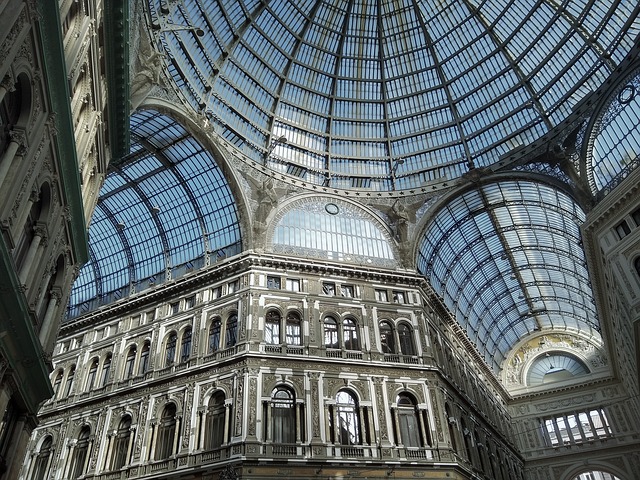
I’ve actually flown into Naples twice now, once when we visited Pompeii, Herculaneum and Sorrento, and most recently when we went to Ischia. But I’ve never properly visited Naples.
Naples has a slightly gritty, chaotic reputation, but the more I read about the city, the more I want to visit properly, and there seems to be so much to do. There’s a world-leading archaeological museum, the oldest working opera house in the world, a Royal palace built in 1600, a “New” castle that’s a mere 700 years old and a contemporary art museum with works by Jeff Koons and Andy Warhol.
Naples also has some lovely churches and piazzas, but it’s actually what’s underneath them that interests me most. Naples must be one of the world’s leading city breaks for underground attractions. You can visit the strange network of centuries-old tunnels underneath Naples on a range of walking tours, and see the evidence left by Naples residents from the ancient Greeks all the way to the 1940s, when the tunnels were used as air-raid shelters during World War II.
Other underground attractions include the San Gennaro Catacombs, which are the largest in Southern Italy, and the Bourbon Tunnel, a former aqueduct that was converted into an escape route for the wealthy Bourbon family, in case they ever needed to flee their palace. Naples’ latest underground attraction is its Metro line. Many of the Naples Metro stations have been beautifully decorated (perhaps inspired by the Stockholm Metro). The highlight is Toledo station, where mosaics transport you to an underwater dreamworld.
Naples is also the home of pizza, and you can go to L’Antica Pizzeria da Michele and taste Margherita pizza that’s been made to the same recipe since 1870.
Monaco
For people-watching and a touch of glamour
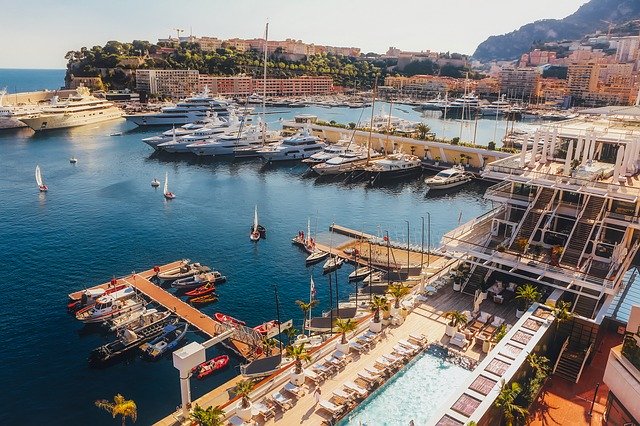
Hey you! Yes you, the non-millionaire over there! You too can go to Monaco. Monaco is the world’s second-smallest country (the smallest is the Vatican) and is famous for its glitz, glamour and Grand Prix. I visited Monaco on an EasyCruise in 2005 – our bright orange ship was a little out of place alongside the superyachts in the harbour! That was 15 years ago though so I’m well overdue for another visit to Monaco.
There’s more than enough to do in Monaco to fill a weekend city break, but you might prefer to stay in nearby Nice, where hotel prices are a little more reasonable. The two are linked by train, express bus and the local bus, which has been described as one of the most beautiful bus rides in the world and costs less than 2 euro.
For a tiny country, and one that’s not exactly geared up for regular people, there’s a surprising number of interesting and accessible things to do in Monaco. You may not be able to afford to gamble in Monte Carlo’s famous Casino, but you can take a 40-minute tour each morning for 17 euro.
Other attractions in Monaco which don’t require you to have won the lottery include taking a look at the Prince’s Palace (try to get there before 11.55am to see the changing of the guard), visiting Monaco’s Saint Nicholas cathedral, following the Sculpture Trail of nearly 100 works of art and visiting the Princess Grace Rose Garden, planted in memory of Grace Kelly. You can even get some beach time in during your Monaco city break – Larvotto beach has a free section alongside the private area.
Palma, Spain
Mixes island escape and Spanish city break
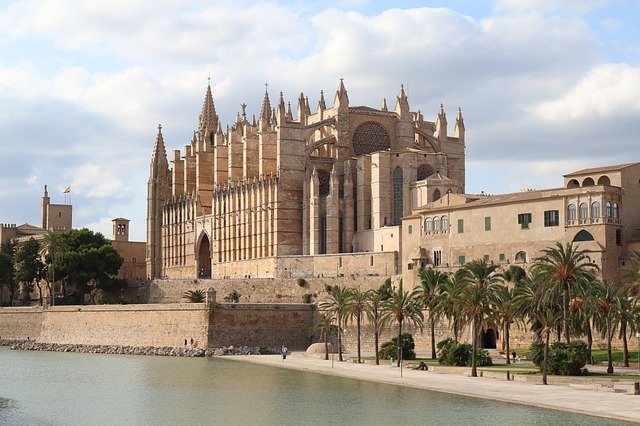
Mallorca’s better known as a beach destination than as a place to take a city break; many visitors to Mallorca land at the airport in Palma and never give the island’s capital a second thought. But with frequent flights from virtually every UK airport, perfect sightseeing weather for most of the year, great food and loads of things to do, Palma is starting to be seen as more than just where Mallorca’s airport is.
I’ve visited Palma twice before, but never “properly”, which makes it a great candidate for a 2020 city break. The first time I’d come down with gastroenteritis and threw up on the bus in front of a load of disgusted Spanish teenagers, then again at Palma bus station (yay me). The second time we took the lovely Tren de Sóller vintage train through the mountains, but we only had the train turnaround time in Palma.
I already knew about Palma’s massive sandstone cathedral, but there’s a lot more to do in Palma. Sitting high above the city and reached by a winding walk through a pine forest, Bellver Castle is an unusual, circular castle which looks like something straight out of Game of Thrones. Wandering narrow streets in the old town is always a favourite city break activity, and Palma has plenty to explore. I’d also love to go to the old Arab Baths and artist Joan Miró’s studio.
To eat, I’d like to try the San Juan Mercado Gastronomico, a former abattoir that’s now full of stalls selling all kinds of food. It looks a lot like the cool food courts we’ve been to in Seville, Valencia and Manchester and they’re always a good option for trying a little bit of everything in a relaxed environment.
Girona, Spain
For Game of Thrones locations and gourmet ice cream
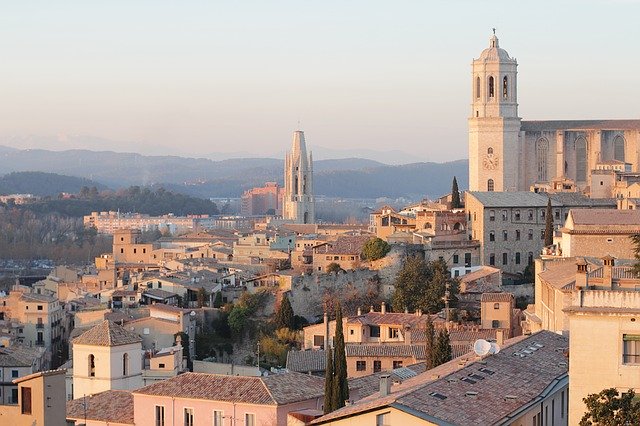
Girona’s another massively overlooked city break destination, but one that’s getting an increasing amount of attention. It’s the gateway airport for the Costa Brava and some flights for Barcelona land here too, but too few visitors to this part of Spain experience Girona itself.
The more I read about Girona, the more I want to travel there for a weekend break in 2020. It’s a beautiful Medieval city that, like Lucca, still has its amazing fortified walls. Girona’s were first built by the Romans and you can walk almost the whole way around the old city on them. There’s a majestic cathedral with a 100-year-old tapestry that rivals the Bayeux Tapestry for historical importance and a beautiful Jewish quarter, full of narrow alleys and secret gardens.
Girona’s other defining feature is its bridges. The city is built on the banks of three rivers, so it’s not surprising that there are no fewer than 11 bridges in the city centre. The most picturesque cross the River Onyar – don’t miss the rust-coloured Pont de Ferro, which was built by Gustave Eiffel in 1877.
Many films and TV shows (including Game of Thrones) have been filmed in Girona, so it’s appropriate that there’s a Museum of Cinema. I loved seeing the Game of Thrones locations in Iceland, Malta, Seville and Croatia so I’d definitely be checking out the Arab Baths, which featured prominently in Season Six. You can combine two of Girona’s main draws by ordering an ice lolly in the shape of Jamie Lannister’s golden hand at legendary Girona ice cream shop Rocambolesc.
Las Palmas, Spain
For beaches, history, food and fragrance
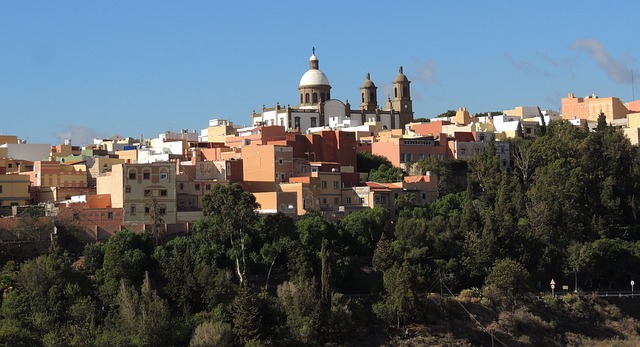
I hadn’t really thought of the Canary Islands as having cities, but Las Palmas on Gran Canaria is actually Spain’s ninth-biggest city. As well as having one of the world’s best city beaches, there’s also enough to keep you occupied either on a weekend break or on a day trip from one of Gran Canaria’s beach resorts.
Top of the list of Las Palmas’s attractions is the Casa-Museo de Colón. During the 15th, 16th, 17th and 18th century, the Canary Islands were an important staging post on the way across the Atlantic. Columbus stopped at Las Palmas, and this museum documents his voyages and the islands’ contribution to maritime history.
Other things to do in Las Palmas include visiting the Catedral de Santa Ana and taking a lift to the top of the bell tower for a view over the city, the harbour and the Atlantic Ocean. The Casa del Perfume Canario also sounds fascinating – it’s a family-run perfume museum and shop that’s been in business since the 1870s. The staff show you how the perfumes are distilled and filtered, then talk you through some of their 163 fragrances.
Rotterdam, The Netherlands
For quirky modern architecture and day trips to some of the Netherlands’ best cities
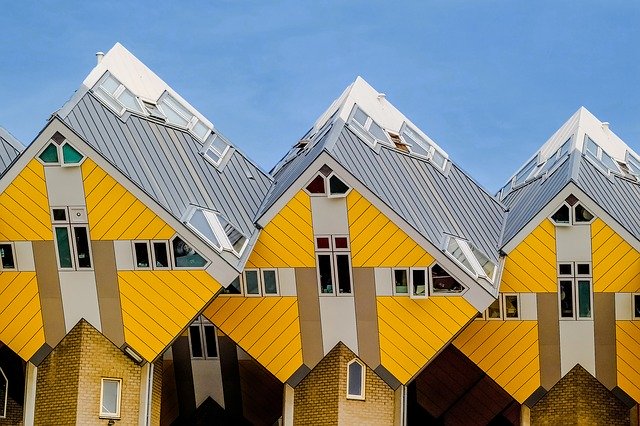
There’s more to the Netherlands than Amsterdam! I didn’t get there in 2019 but I’ve wanted to visit Rotterdam for ages. Rotterdam is unusual among Dutch cities, mainly because it doesn’t look like the likes of Amsterdam or Utrecht. Rotterdam is a major port city for the North Sea, and was heavily bombed during World War II. The old buildings of Rotterdam were almost entirely destroyed.
Unlike many other cities which met the same fate during the war, the authorities in Rotterdam decided not to rebuild what had been there before, but to build a new city, full of modern architecture. If you love interesting modern architecture (and I do – one of my main reasons for visiting Dubai was to see the amazing space-age buildings) then you’ll be in heaven. One of the places on my Rotterdam must-sees list is the Overblaak Development, a community of cube houses which are intended to look like trees in a forest. I’d also love to see the “vertical city” formed by the De Rotterdam skyscrapers, and the straight-from-Star-Trek Centraal Station.
Rotterdam is also on my list for a 2020 Christmas city break. The city has its own Christmas markets, but Amsterdam is only a short train ride away and is particularly wonderful at Christmas, especially when the Light Festival is on. Also not too far from Rotterdam is Gouda, famous of course for the cheese, but at Christmas Gouda has another reason to visit. On one evening in mid-December (in 2020 it’ll be 11 December), the Town Hall and the historic streets surrounding it are lit entirely by soft, enchanting candlelight. The night, known as Gouda by Candlelight, coincides with Gouda’s own Christmas markets, and makes a lovely day trip from Rotterdam.
Thessaloniki, Greece
For Greece’s capital of culture, historic sights and a vibrant waterfront
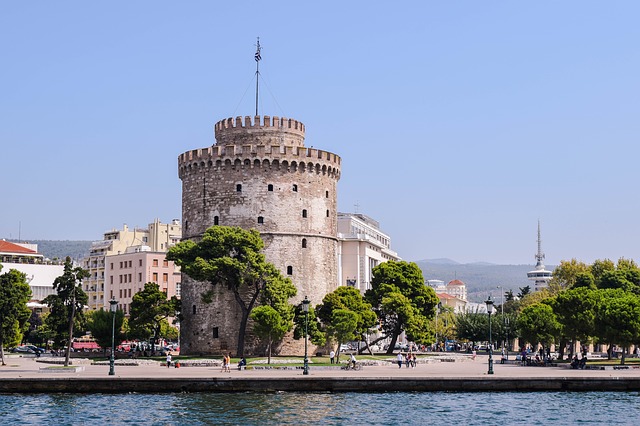
Thessaloniki is Greece’s second city, and since I really enjoyed our trip to Athens a couple of years ago and Thessaloniki looks like it has a lot of the same charms, it’d make an ideal city break for us in 2020.
Thessaoniki is situated in the north-west corner of the Aegean Sea. The city has a long and noble history; during Roman times it was capital of all the Greek territories. Although two-thirds of the city was destroyed by a huge fire in 1917, there are still lots of archaeological sites around the city, including the impressive Roman Agora and the Arch of Galerius. The White Tower is Thessaloniki’s most famous landmark and is another historic building, dating back to 1430.
One of my favourite things about Athens was the distinct neighbourhoods in the city centre, and Thessaloniki is similar in that respect. The historic Ladadika district and the revitalised area around the old port look fun, while the Ano Poli (Upper Town) area was untouched by the fire and is full of beautiful old buildings, narrow streets and wonderful views at sunset.
Where would you go on a 2020 European city break?
Header photo: Riverside houses in Girona, Spain. Image by Marc Pascual from Pixabay.
Pin it for later!
